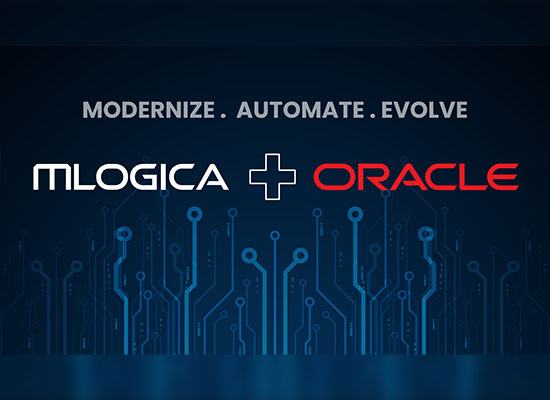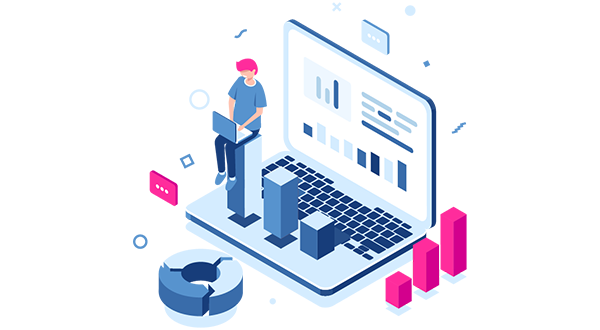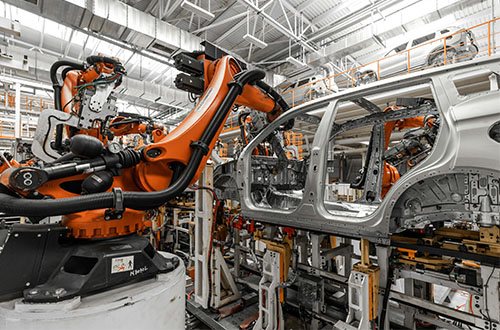

How mLogica and Oracle Drive AI-Powered Database and Mainframe Modernization

The mLogica Migration Team

Accelerating migrations from non-Oracle and Mainframe systems
to Oracle Cloud for performance, agility, and cost efficiency
Modernization is an urgent imperative. Enterprise leaders face rising costs from maintaining legacy environments, increasing risk due to shrinking specialized talent pools, and mounting pressure to deliver agility for digital transformation and AI initiatives. For organizations relying on non-Oracle databases or Mainframe systems, the challenge is even more complex:
How to modernize mission-critical workloads without disruption
Oracle provides the platform, incentives, and multicloud flexibility to modernize. mLogica provides a proven, AI-powered migration platform that accelerates these moves with reduced cost and greater certainty. Together, Oracle and mLogica deliver not just migrations, but a foundation for long-term business transformation.
A Modernization Runway, Not Just a Landing Zone
Oracle’s strategy is to simplify and de-risk the journey to the cloud. Oracle offers Autonomous Database and Exadata for high-performance, automated operations, and extends this capability across multicloud options with Database@Azure, Database@Google Cloud, and Database@AWS. These choices allow enterprises to place data close to applications and analytics, minimizing disruption and avoiding unnecessary latency or egress costs.
Oracle Dedicated Region Cloud@Customer delivers a fully managed cloud region with all Oracle Cloud Infrastructure (OCI) services, deployed directly in a customer’s data center. This solution enables organizations to meet strict data sovereignty and regulatory requirements by ensuring all data and workloads remain on-premises and under their exclusive control, while providing the lowest latency and highest availability to host modernized legacy workloads.
Oracle further lowers the financial barrier through programs such as Support Rewards, Bring Your Own License (BYOL), and Universal Credits, while Cloud Lift Services provide expert guidance at no additional cost. These programs form the foundation of a low-risk modernization pathway.
Yet, while Oracle provides the destination and incentives, enterprises need a proven partner to operationalize the move. This is where mLogica adds critical value, delivering automation, expertise, and a repeatable migration factory approach to help enterprises confidently modernize even the most complex non-Oracle and Mainframe workloads.
Additionally, Oracle’s architectures are built for easy scalability, allowing organizations to efficiently increase capacity as their business grows while controlling costs. This transition ensures customers benefit from modern, secure, and flexible infrastructure that drives innovation and prepares them for the future.
With Oracle’s autonomous technology, organizations enjoy automated management, security, and tuning, reducing manual work and further boosting operational efficiency and cost savings.
AI-Powered Migration Software Built for Heterogeneous Database Estates
Enterprises rarely operate a single, homogenous environment. Most run portfolios that include SQL Server, DB2, Sybase, Teradata, and even decades-old Mainframe systems. Migrating this diverse mix to Oracle Cloud requires more than manual effort and traditional tooling.
mLogica’s AI-powered database migration software, STAR*M, is designed for exactly this challenge. Its automated discovery engines catalog databases, schemas, application dependencies, and code objects, creating a clear picture of the migration landscape.
AI-driven conversion capabilities then accelerate schema and procedural code transformation, reducing the manual rework traditionally required. Automated test generation and workload replay ensure migrated workloads perform as expected, while orchestrated data movement integrates seamlessly with Oracle tools like GoldenGate and Zero-Downtime Migration.

Post-migration, mLogica’s AI engines provide optimization recommendations, ensuring enterprises unlock the full benefits of Autonomous Database and Oracle Database 23ai features.
This approach turns what was once a high-risk, one-off project into a
repeatable, high-confidence program that scales across the enterprise.
Mainframe to Oracle Cloud: From Heritage to High-Velocity
Mainframes remain the backbone of many enterprises, running mission-critical applications that are costly to maintain and increasingly difficult to staff. Migrating these systems has historically been seen as too risky or too expensive. mLogica’s LIBER*M platform changes that narrative.
By using AI to parse COBOL, Assembler, PL/I, and other legacy code, the platform translates complex logic into Oracle-native architectures that are easier to manage and future-ready. Data structures like IMS and VSAM are automatically mapped to Oracle’s relational or Autonomous Database environments.

This enables phased modernization strategies, such as offloading specific datasets, applying the “strangler pattern” to high-risk modules, and gradually cutting over entire workloads. As mainframe specialists retire, enterprises face escalating workforce constraints, mLogica’s LIBER*M eliminates this dependency by translating workloads into more modern, Oracle-native architectures.
The result is a controlled, step-by-step journey from heritage systems to high-velocity Oracle Cloud environments, thereby reducing dependence on shrinking mainframe talent pools while delivering performance, security, and cost efficiency aligned with modern enterprise needs.
Additionally, migrating from mainframe systems to Oracle’s enterprise-class technology allows customers to leverage superior Reliability, Availability, and Serviceability (RAS), leading to improved system uptime, easier maintenance, and lower operational risks. Oracle’s solutions provide strong performance with advanced processing features, enabling faster transactions and real-time analytics to support mission-critical workloads. Migrating from mainframes to an Oracle enterprise architecture can save 50-80% or more in operational costs as compared to the legacy system.
The Economics: Cost Transparency, Controlled Risk, Accelerated Value
While modernization is about transformation, cost remains a central consideration. mLogica’s AI-powered approach aligns financial and operational levers to maximize return on investment. At the program level, advanced AI-powered automation reduces the number of manual hours required for code conversion, testing, and cutover, creating predictable timelines and lower overall services costs.
On the cloud side, Oracle’s Support Rewards, BYOL, and Universal Credits significantly reduce operating expenses, while multicloud deployment options ensure enterprises avoid hidden costs tied to latency and egress. Beyond simple savings, mLogica accelerates the realization of value by enabling enterprises to adopt Oracle Database 23ai features, such as vector search for AI-powered applications, sooner in their journey.
AI-driven automation not only reduces cost but eliminates uncertainty in
schedules and scope, giving executives confidence in program outcomes.
A Pragmatic Factory Model starts with the First Assessment to the Final Cutover
mLogica’s migration methodology is not a one-off exercise but a migration factory model designed for repeatability and governance. It begins with automated discovery and assessment to select the appropriate migration method, offline, online, or hybrid. From there, AI-assisted conversion handles schemas and procedural code, while automated test harnesses validate performance against real-world workloads.
Data synchronization is managed through integration with Oracle’s own replication tools, ensuring minimal downtime and controlled cutovers.
Once workloads are live on Oracle Cloud, post-migration optimization further enhances performance and aligns with best practices for Autonomous Database. Audit trails and checkpoints ensure migrations meet compliance requirements in regulated industries.
Throughout the process, program dashboards, checkpoints, and audit trails give executives complete visibility and assurance. This structured model allows enterprises to migrate multiple workloads in waves, building momentum and accelerating transformation across the portfolio.
Why mLogica for Oracle Cloud Now
Enterprises choose mLogica because it delivers where complexity is highest. For heterogeneous database estates and Mainframe environments, mLogica’s AI-powered migration software provides automation where other approaches still rely heavily on manual intervention.
Its alignment with Oracle’s tools, incentives, and cloud strategy ensures migrations are efficient, cost-effective, and future-ready. Unlike one-time, bespoke projects, mLogica’s factory model creates repeatable outcomes that scale across the enterprise. The result is not just a successful migration, but a modernization journey that empowers organizations to leverage Oracle Database 23ai, Autonomous operations, and multicloud flexibility.
mLogica has successfully migrated some of the world’s largest mission-critical legacy non-Oracle databases and mainframe systems to Oracle and Oracle Cloud for leading organizations across healthcare, aviation, utilities, transportation and logistics, telecommunications, and financial services and insurance.
With mLogica as a partner, enterprises gain both the technology and the expertise to move quickly to the Oracle cloud with confidence, and at scale.
Meet mLogica at Oracle CloudWorld
Oracle CloudWorld is the premier gathering for enterprises, partners, and thought leaders shaping the future of data, AI, and cloud modernization. mLogica’s leadership team will be setting up one-on-one meetings with Oracle executives, top-tier Oracle partners, and leading enterprises. These sessions will provide an opportunity to discuss real-world challenges of migrating non-Oracle and Mainframe systems, explore how mLogica’s AI-powered migration software accelerates the journey to Oracle Cloud, and build collaborative strategies that leverage Oracle’s incentive programs.








































